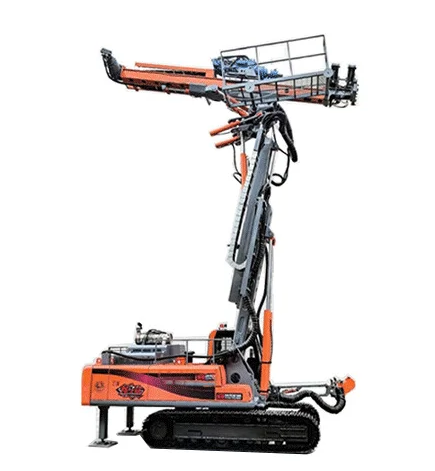 English
English שפה עברית
שפה עברית  Kurdî
Kurdî  Español
Español  Português
Português  русский
русский  tiếng Việt
tiếng Việt  ภาษาไทย
ภาษาไทย  Malay
Malay  Türkçe
Türkçe  العربية
العربية  فارسی
فارسی  Burmese
Burmese  Français
Français  日本語
日本語  Deutsch
Deutsch  Italiano
Italiano  Nederlands
Nederlands  Polski
Polski  한국어
한국어  Svenska
Svenska  magyar
magyar  বাংলা ভাষার
বাংলা ভাষার  Dansk
Dansk  Suomi
Suomi  हिन्दी
हिन्दी  Pilipino
Pilipino  Gaeilge
Gaeilge  Indonesia
Indonesia  Norsk
Norsk  تمل
تمل  český
český  ελληνικά
ελληνικά  український
український  Javanese
Javanese  தமிழ்
தமிழ்  తెలుగు
తెలుగు  नेपाली
नेपाली  български
български  ລາວ
ລາວ  Latine
Latine  Қазақша
Қазақша  Euskal
Euskal  Azərbaycan
Azərbaycan  Slovenský jazyk
Slovenský jazyk  Македонски
Македонски  Lietuvos
Lietuvos  Eesti Keel
Eesti Keel  Română
Română  Slovenski
Slovenski
What Are the Different Jet Grouting Systems: Single, Double, and Triple Fluid?
2025-11-07
What Are the Different Jet Grouting Systems: Single, Double, and Triple Fluid?
Jet grouting is a highly adaptable ground improvement technology that utilizes a high pressure rotary jet drilling rig to create soil-cement elements. Its versatility is largely derived from the use of three distinct systems: Single Fluid, Double Fluid, and Triple Fluid. Each system employs a different combination of fluids (grout, air, and water) to optimize the jetting process for specific soil conditions and desired column characteristics. The choice of system involves a trade-off between achievable column diameter, material cost, operational complexity, and control over the final product's properties.
The Single Fluid system (Jet 1) is the most fundamental approach. In this method, the high pressure rotary jet drilling rig uses a single fluid—a cement grout slurry—which is pumped at very high pressures (typically 400-600 bar) through a nozzle at the monitor. The high-energy grout jet erodes the surrounding soil and simultaneously mixes with it to form a soil-cement column. The spoil, consisting of excess grout and displaced soil, flows up to the surface naturally. This system is mechanically simpler but generally produces the smallest column diameters for a given set of parameters, as the grout jet's energy is attenuated more quickly by the soil than an air-shrouded jet. It is effective in a range of soils, from cohesive clays to granular sands.

The Double Fluid system (Jet 2) enhances the erosive capacity of the jet by adding a concentric shroud of compressed air. A high pressure rotary jet drilling rig configured for this method injects two fluids: a grout slurry at high pressure and a ring of compressed air at a much lower pressure that surrounds the grout jet. This air shroud acts as an insulator, reducing the friction between the grout jet and the surrounding soil and preventing the jet from breaking up prematurely. This allows the grout jet to maintain its coherence and energy over a greater distance, resulting in a larger column diameter compared to the single fluid system in the same soil. The return spoil is a mixture of grout, soil, and air, which is more efficiently transported to the surface.
The Triple Fluid system (Jet 3) is the most complex and offers the highest degree of control. It separates the soil erosion function from the grouting function. A high pressure rotary jet drilling rig for triple fluid jet grouting uses three concentric fluids. The innermost is a guide rod for air/water. The first erosion fluid is a ring of high-pressure water (or water and air) that is used solely to break down the soil structure. The second erosion fluid is a shroud of compressed air that surrounds the water jet, shielding it to maximize its cutting range and efficiency. Finally, a low-pressure grout slurry is injected through a separate nozzle below the erosion jets to fill the cavity created and mix with the eroded soil. This separation allows for independent optimization of the cutting and grouting processes, often yielding the largest and most uniform columns, particularly in dense or cemented soils.
The selection of the appropriate system for the high pressure rotary jet drilling rig is a critical design decision. The Single Fluid system is often chosen for its simplicity and lower cost in less challenging conditions or for creating smaller columns or panels. The Double Fluid system provides a balance, offering larger diameters without the full complexity of the triple system. The Triple Fluid system, while the most expensive and technically demanding, is indispensable for achieving large diameters in difficult soils like very dense sands, gravels, or soft rock. The decision is based on a detailed geotechnical investigation, the required column properties (strength and diameter), and an economic analysis of the overall project cost.




